AMAZON multi-meters discounts AMAZON oscilloscope discounts
Isolating probes are simple in their construction. The probe housing, usually made of plastic, contains a resistor placed in series with the probe tip and the coaxial cable connected to the output side of the probe.
Isolation probe for v.t.v.m.
Isolation probes are made for use with either a v.t.v.m. or a scope. Although the two probe types may seem identical, they are not interchangeable. The isolation probe for work with a v.t.v.m. usually contains a 1-meg-ohm resistor as the isolation unit.
The isolation probe for work with a scope uses a 47,000-ohm resistor.
Reasons for using isolation probe
This probe when used with a v.t.v.m. permits you to make measurements of d.c. voltages at test points which also contain a.c.
Whenever you have a.c. in a circuit, particularly at high frequencies, it is important to remember that to the receiver an instrument is nothing more or less than a capacitor. Since test instruments shunt the circuit under test, the additional capacitance results in a lowering of the circuit impedance. Because a.c. voltage is proportional to the impedance, you can see that this has the effect of reducing the amount of voltage present-thus giving a false indication on the meter.
The series resistor in the isolation probe (as the name implies) acts to isolate the capacitance of the test instrument from the circuit being examined. However, it does more than just that.
The probe series resistance, plus the input capacitance of the v.t.v.m., acts as a resistance-capacitance filter. This helps keep a.c. out of the v.t.v.m. where it might be rectified and added to the d.c. voltage being measured, thus changing the accuracy of the reading.
Probe construction

Fig. 701. Cut-away view of isolation probe for use with v.t.v.m.
The isolation probe (also known as a d.c. probe) for the v.t.v.m. contains a resistor placed inside a test prod as shown in Fig. 701.
The 1-meg-ohm resistor is placed as far forward in the probe as possible. This means that in using this probe you are always placing 1 megohm between your hands (and cable) and the set under test. This helps increase the effect of isolation.
When you buy v.t.v.m., you usually receive an isolation probe with it. Since the manufacturer considers the isolation probe an integral part of the v.t.v.m., the input resistance of the instrument includes the value of resistance in the probe. The input resistance of a v.t.v.m. is calculated from the isolation probe tip as a starting point and not from the input jack. A v.t.v.m. with an input resistance of 11 megohms has 10 megohms in the instrument and l megohm in the probe.
A representative isolation probe for use with a v.t.v.m. is shown in the exploded view (Fig. 702). This particular type does not connect directly to a cable, but instead slips on the probe end of a direct probe. A feature of this unit is that it contains a small slide switch which can be used to short the I -meg-ohm resistor contained in the probe housing. When the slide switch is pushed back, the 1-meg-ohm isolating resistor is automatically connected in series with the probe tip. Moving the switch forward shorts the resistor and supplies a direct connection to the input of the v.t.v.m. In this position the probe can be used for measuring a.c. voltages or for making resistance checks. Thus, the one unit serves both as a direct probe as well as an isolation probe.
Effect of probe on meter calibration
Although the isolation probe may seem to be a separate and distinct unit, it should be considered only as an extension arm of your v.t.v.m. and a definite part of that instrument. The isolation resistor in the probe is in series with the voltage-divider network in the input circuit of your v.t.v.m. and is part of the d.c. input resistance of the instrument. If you do not use your isolation probe, then you cannot be sure that your d.c. voltage reading is correct.
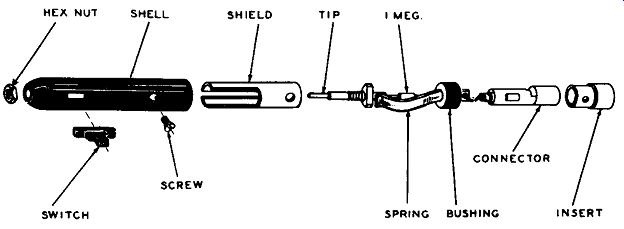
Fig. 702. Exploded view of isolation probe showing assembly details.
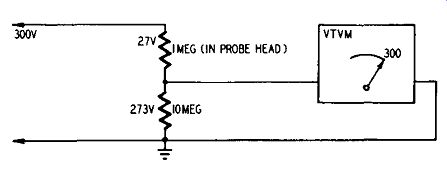
Fig. 703. The v.t.v.m. is calibrated for use with the isolation probe.
To see the effect of the isolation probe when used with a v.t.v.m. examine Fig. 703. Assume that we are measuring the B plus potential of a circuit and that we know the voltage to be 300. Approximately 27 volts will drop across the probe resistor, the balance (273 volts) appearing at the input to the v.t.v.m.
Your test meter, however, will not read 273 volts. It will indicate 300 volts because it has been calibrated to do so. Suppose, now, that you measure the same 300-volt point, but this time use direct test leads instead of the isolation probe. Your v.t.v.m. will now read 327 volts. Generally speaking, neglecting to use your isolation probe will cause your v.t.v.m. reading to be about 10% higher than the correct value.
Increased isolation To secure greater isolation, some service technicians attach a high-value resistor of 1 or more megohms to the isolation probe, the free end of the resistor then serving as the probe point. There is nothing wrong with this idea, provided you realize that it will reduce your v.t.v.m. voltage reading.
As an example, suppose you connect a 9.1-meg-ohm resistor to the probe tip. The total probe resistance now becomes 10 megohms approximately. If the internal resistance of your v.t.v.m. is also 10 megohms, then the voltage you are testing will divide itself equally between the meter and the probe. All you have to do then is to multiply your scale reading by 2. Because of the way in which your v.t.v.m. is calibrated, your voltage reading, though not absolutely correct, will be good enough for all practical purposes.
The advantage of this technique is that it reduces loading on circuits whose resistance is an appreciable amount. You might use this approach when testing in a circuit where the resistance is l megohm or more. Naturally, in circuits having a much lower resistance this isn't necessary.
You will find it convenient to mount the 9.1-meg-ohm resistor on a small piece of bakelite or similar insulation material. Connect one end of the resistor to a tip and the other end to a female connector so that it can slide right on your isolation probe. If you make this device, keep it with your test equipment. It will save you time.
Using the probe with a multitester
The isolation probe that you received with your v.t.v.m. or scope should not be used with a multitester (volt-ohm-milliammeter) regardless of the sensitivity of the instrument. The input resistance of such instruments depends upon the setting of the voltage scale selector. Consider a multitester having a sensitivity of 1,000 ohms per volt. This is a very widely used instrument for servicing work. The input resistance can be calculated by multi plying the sensitivity by the d.c. voltage scale you select. Assume, for example, that you set the selector switch to read 5 volts. At this setting, the input resistance is 5,000 ohms (5X 1,000=5,000). In series with this will be our isolation probe with its 1 -meg-ohm resistor. If we put this combination across a source of 200 volts, then almost the entire 200 volts will drop across the 1-meg-ohm probe resistor and less than I volt will appear at the input to the meter. Thus, for a voltage source of 200, your meter will give scarcely any indication.
Suppose that you use a multitester having a sensitivity of 20,000 ohms per volt. On a 5-volt scale setting, the input resistance is 100,000 ohms (5X20,000=100,000). Your meter would now read about 10 % of the actual voltage under test. If we rotate the scale selector so that the multitester is set to read 500 volts, then the input resistance becomes 10 megohms (500X20,000=10,000,000). This would apparently seem to solve our problem since our multitester, set to this scale, now has the same input resistance as the average v.t.v.m. There is still one serious difference, however.
The v.t.v.m. has been calibrated for use with the isolation probe; the multitester has not. Thus, the multitester, set on the 500-volt scale will still read about 10% below normal.
Using the isolation probe
With few exceptions, you can use the isolation probe whenever you find it necessary to measure d.c. voltages. Keep in mind, how ever, that a test point in a radio or television receiver may also be a low-or high frequency signal point. For example, the plate of the horizontal output tube is usually operated at about 400 volts d.c. However, on this same plate you will find pulses having an amplitude up to about 6 kilovolts. Any attempts to measure d.c. voltage here using the isolation probe will result in damage to the probe and to the v.t.v.m.
Before you work on a TV set you should determine whether the point under test is low or high impedance and whether there are simultaneous d.c. and a.c. voltages. You should know also the approximate amplitudes of these potentials. A typical example is the control grid of the vertical blocking oscillator of a TV set.
Here we would have a negative d.c. bias of about 30 volts, a pulse having an amplitude of some 85 volts and an impedance of 10 to 15 megohms.
Quite obviously, the a.c. voltage pulse can easily be measured by means of a calibrated scope and a capacitive divider probe of the type described in an earlier section. The impedance of the scope and probe combination is sufficiently high so that the circuit' is not disturbed.
Now consider the problem of measuring the d.c. bias voltage.
This is low enough so that its measurement can easily be done.
However, if you use a typical v.t.v.m. and isolation probe, the total impedance you will present to the vertical oscillator grid circuit will be 11 megohms. If, at the moment of test, the setting of the vertical hold control is such that the resistance to ground of the vertical oscillator grid circuit should also happen to be 11 megohms, the effect of testing would be to put these two resistances in parallel. In other words, the resistance of the grid circuit (11 megohms) would be in parallel with the resistance of the probe and v.t.v.m. (also 11 megohms). The total net effect would be to cut the circuit resistance in half, reducing the bias voltage by a similar amount and producing a false reading on the meter.
There are several ways of meeting this situation. You can use a v.t.v.m. having a higher input resistance. Many v.t.v.m.'s are rated at 26 megohms (including the 1 -meg-ohm isolation probe). Using such an instrument would reduce the impedance of the vertical blocking oscillator grid circuit from 11 megohms to slightly less than 8 megohms. If our bias voltage was actually 30, the meter would show it to be only about 22.

Fig. 704. Circuit of isolation probe for use with a scope. RG-62V has a smaller
capacitance thm1 the coaxial cable shown here.
Another alternative is to use your resistive type high-voltage d.c. probe. If, for example, you have a high-voltage probe with an attenuation factor of 30 (a common value), you can get an accurate oscillator bias voltage reading by setting your v.t.v.m. on the 3-volt scale. If the correct bias is 30 volts, the meter needle will move about one-third the way up on the scale. The reading will be fairly accurate because the resistance of the high-voltage probe is more than 100 times as great as the resistance of the vertical oscillator grid circuit.
RESISTIVE ISOLATING PROBE SHARPENS MARKERS
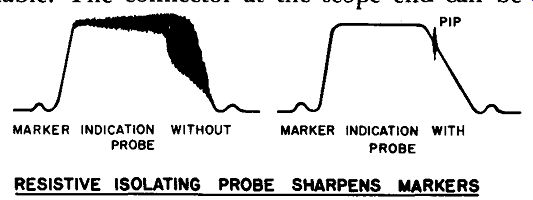
Fig. 705. The use of an isolation prove sharpens the marker · on the response
curve.
Isolation probe for scope
The probe containing a 1 -meg-ohm isolation resistor and described in the preceding paragraphs is for use with a v.t.v.m.
Isolating probes are also designed to provide the optimum filter characteristic for a scope used in visual alignment work.
The circuit of a scope type isolation probe is shown in Fig. 704.
The isolation resistor is a 47,000-ohm, ½-watt, 10% carbon resistor in series with the hot lead of a 42-inch length of RG59U coaxial cable. The connector at the scope end can be either as shown in the illustration or a coaxial type, depending upon the kind of connector you have on your own scope.

Fig. 706. Relationship of the isolation probe to the scope input.
Marker indication
The resistive isolation probe sharpens markers, the effect being illustrated in Fig. 705. The stray capacitance of the wiring inside the probe, plus the capacitance of the shielded cable, makes the probe act as a low-pass filter. This has the effect of sharpening broad marker pips and keeps these pips from masking or covering parts of the sweep waveform. The time constant of the isolating probe is also a matter of some importance. Too large a time constant causes distorted indication; too small a time constant develops a broad and indistinct marker.
The relationship of the probe to the scope input is shown in Fig. 706. In addition to filtering the high-frequency components from beat markers to yield a sharp marker on the scope screen, the probe is also used for testing at the converter grid or TV front ends. In this connection, the isolation resistor suppresses any possible tendency toward oscillation, regeneration, or instability due to feedback.

Fig. 707. Commercial test probe set for use with a scope. The probes are easily
interchanged on the cable, facilitating rapid service work.
The direct probe
The type of probe you should use in servicing depends entirely upon where in the set you need to direct your attention. Quite obviously, if all you intend doing is to make resistance checks, all you need are a pair of test leads. If you want to examine the waveform in i.f. stages, you need a crystal demodulator probe.
If you need to check low-impedance or low-frequency circuits or circuits where cable capacitance is not important, then you could use a shielded, direct probe.
Having probes on hand for your servicing work is very much like having screwdrivers. You can either have individual screw drivers or you can get the type that comes with a handle, a chuck and five or six interchangeable blades. You can do the same with probes. Either get individual probes for each purpose or get a test set with a universal cable which will accommodate each probe.
A test probe set for use with a scope is shown in Fig. 707. Here we have direct, isolating, crystal and low-capacitance (10-to-1) probes. The same cable is used for each of the four. To use any probe, the technician does not disconnect the cable from the scope but simply connects each probe head to the cable as required by a particular test.
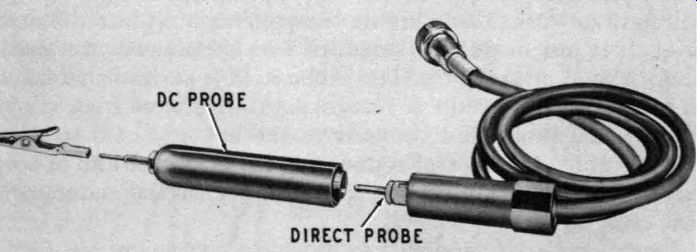
Fig. 708. The direct probe is part of the cable. The d.c. probe is the slide-on
type.
The alligator clip is wed when a hold-on connection is wanted.

Fig. 709. Cross-sectional view of a shielded, direct probe.
A different system is shown in Fig. 708. In this illustration a direct probe is permanently attached to the cable and always forms part of the test setup. Additional probe heads, such as a d.c. probe, are designed to slip on the prod end of the direct probe.
The principal advantages of the probes shown in Figs. 707 and 708 are the shielding of the inner conductor from probe tip to the connector and the fact that it is not necessary to change cables when using different types of probes.
A shielded direct probe is exactly what its name implies. It's a unit for making a connection between your v.t.v.m. or scope and the set being repaired. A cross-sectional view of a direct probe is shown in Fig. 709.
Direct test probes are used in low-frequency or low-impedance circuits where direct connection to the test point is required in order to utilize maximum scope sensitivity and where the added input capacitance contributed by the coaxial cable is not important.
A direct probe is just about the simplest type with which you will have to work. There are no components built into the probe head. It is just made of a length of wire terminated in a needle point, a prod or probe tip. The probe itself is an insulated handle in which the probe tip is mounted. A wire runs from the tip through the probe and connects to the hot lead of a length of coaxial cable. The type of connector used at the v.t.v.m. or scope can be a phone tip, pin plug, spade lug, or coaxial connector or may even be bare wire.
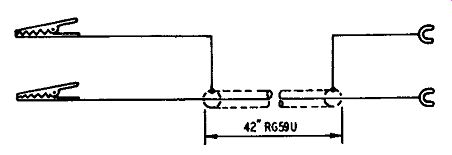
Fig. 710. A length of coaxial cable is easily converted into a direct probe.
Direct probes are designed to provide a convenient test facility in general trouble-shooting work, with minimum pickup of stray fields in the vicinity of the chassis as well as with minimum circuit loading. A simple direct probe can be built following the information given in Fig. 710. All that you need are a pair of alligator clips and a 42-inch length of RG59U coaxial cable or equivalent shielded wire.
Open test leads used in trouble-shooting work, often lead to false conclusions because of the introduction of stray voltages into the scope pattern. The difference between waveforms obtained with a direct probe and those secured with open test leads is shown in Fig. 711. The input cable used with the direct probe should be of a type that will add minimum capacitance to the scope input circuit, since the input capacitance tends to shunt the circuit under test and impairs its high-frequency response.
Combined direct and isolation probe The probe shown in Fig. 712 can be used either as a direct or as an isolation probe for a scope, merely by flipping a switch.
When the switch is closed, the 47,000-ohm resistor is shorted and the probe can then be used for general trouble-shooting work.
With the switch opened, the 47,000-ohm resistor is put in series with the hot lead of the coaxial cable. The resistive circuit is basically that of a low-pass filter which will not only sharpen alignment markers, but will also clean noisy response curves.
The entire probe must be shielded so that stray fields will not be picked up. The resistor is a noninductive type.
Combined direct and isolation probes can also be used with the v.t.v.m. The photo (Fig. 713), shows a probe of this type. The setting of the slide switch mounted in the probe housing permits using the probe directly or for the measurement of d.c. voltages.
A 1-meg-ohm resistor is used in this probe.
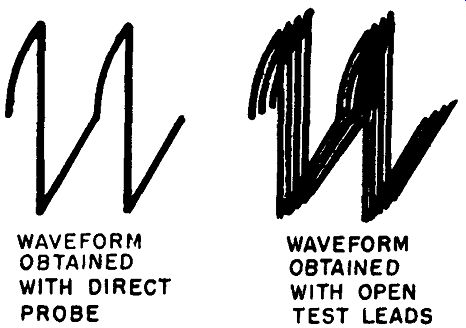
Fig. 711. As shown in the illustration above, a direct probe helps avoid pickup
of stray fields.

Fig. 712. Simple set-up of combined direct isolation probe. When the switch
is up you have an isolation probe. With the switch closed, the resistor is
shorted, and you then have a direct probe.
Another type of combined probe has a slightly different construction. This probe has a rotating sleeve switch at the pointed end. The rotating sleeve is set to DC V when making d.c. voltage measurements, or it can be turned to the OHMS position for making resistance checks. When the sleeve switch is set for the measurement of d.c. voltages, a 1 -meg-ohm resistor becomes part of the probe circuit. When the probe head is turned, the resistor becomes shorted and the unit acts as a direct probe.
The switching feature is convenient and desirable since it helps you avoid changing probes when you have to make different types of measurements. This is particularly true when you are making quick checks and do not wish to take the time to look for or change probes. Just one word of caution: When you use a switch type probe (combined isolation and direct probe), your v.t.v.m.
function selector switch must be set accordingly. If you have your combined probe set for use as an isolation probe, the v.t.v.m. function selector should be set to read d.c. volts and the range selector should be turned to give you the scale reading wanted.

Fig. 713. Photo of commercial type direct-isolation probe. The circuit is
the same as that shown in Fig. 712.
If you use the combined probe as a direct probe, then turn the function selector on the v.t.v.m. to the ohms position.
Before touching the probe point to any terminal in the receiver, (when the receiver is turned on) make sure that both your combined probe and your v.t.v.m. are properly set. Failure to make this check can result in damaged test equipment. Look at the set tings on your instrument first, then make your tests.
Test leads
A pair of test leads can be considered as a probe, particularly since it performs the basic function of any probe-that of connecting the test equipment to the receiver being repaired. The use of test leads is satisfactory for simple checks such as resistance measurements but, for r.f., i.f., video or audio servicing, ordinary test leads can produce serious errors, misleading conclusions and loss of valuable servicing time.
It is particularly important not to use ordinary leads in critical circuit points such as TV front ends or i.f. stages. Their use often produces a feedback loop between the receiver, test instrument and power line. The resulting regenerative feedback can trigger the amplifier of the receiver into oscillation. On the other hand, the high resistance of the isolation probe interferes with this feedback loop and isolates the circuit under test from the v.t.v.m. or scope.
Sometimes, to avoid loss of signal in a probe, a direct connection to a test point is necessary. Using unshielded leads can often obscure the pattern obtained on the scope. This is particularly true if the test signal is weak; you are then operating your scope at its highest sensitivity (vertical gain and sensitivity controls at maximum settings). Under these conditions an unshielded test lead can easily pick up stray, unwanted signals which are then promptly built up in the scope's vertical amplifier. Use a shielded lead to avoid such effect. Shielding a test lead will add about 55 µµf to the input capacitance of the scope, hence the restriction on the use of shielded leads to low-impedance or low-frequency circuits.
Handling probes
Your probes (and this applies to any and all types you have on your bench) are the eyes and ears of your test instruments. Your probes represent the one and only way in which you can properly connect your test instruments to the radio and TV sets you repair.
Obviously, the same care you extend to your v.t.v.m. and scope should apply to your probes.
Of all probes, quite possibly test leads are the most abused.
Next in line of neglect are coaxial cables. The shield braid on such cable, if allowed to become frayed, can short to the center conductor, giving false short indications, sometimes causing real dam age in radio and TV circuits.
To protect test leads, cables, probes, mount a rack near your service bench. Some service technicians use a towel rack (about 18 inches long) to keep test leads handy, clean, and unsnarled.
Fasteners that are sold in hardware stores for holding broom and dust-mop handles make excellent, inexpensive clips for keeping probes handy and out of your way when not in use. Having probes on your bench that are not in use is inviting trouble. It's quite easy to accidentally put a TV set down on a probe. Keep your probe out of your tool box. A probe is a test instrument and not a tool. However, you will at times find it necessary to take one or more probes with you for servicing in the home. Protect the probe by means of a tool roll. If possible, keep the probe in a separate compartment.
When buying coaxial cable keep the capacitance in mind.
RG59U (21 µµf per foot) is widely used, but RG62U (only 13.5 µµf per foot) is gaining favor. RG59U has an impedance of 73 ohms while RG62U is 93 ohms.
AMAZON multi-meters discounts AMAZON oscilloscope discounts